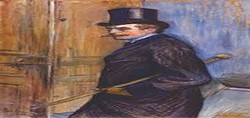A. Preuss, in his copious and valuable history of Freemasonry in the United States, said that, at the beginning of its history, English Masonic Lodges were simply related to the number of buildings, and then to the name of the tavern where the English affiliates came together. For example, circa 1738, there was the Lodge No 6 at the Rummer tavern in London, Queen Street, where the adepts downed three small glasses of punch, between different conversations.” (1).

The popular origin of English Freemasonry
by sol
The popular origin of English Freemasonry, and vicissitudes of the secret society in the different States of Europe and in the United States.
Freemasonry became progressively more powerful
The period between the 18th and 19th centuries must be recognized as the golden age of Freemasonry
So at the beginnings of the 18th century Freemasonry can be seen as completely harmless to most of us, whose followers were both ordinary men and moderate drinkers. But through the centuries Freemasonry became progressively more powerful, acquiring new relevance in England, France and Germany. Since the eighteenth century Freemasonry grew up in many regions of Italy, but especially in the Kingdom of Naples. The period between the 18th and 19th centuries must be recognized as the golden age of Freemasonry in Italy, especially during the Napoleonic Wars, even if usually Napoleon used it for political ends and as instrumentum Regni ( a tool for governing), and Freemasonry began a gradual decline in Italy after that (2).
“But as a general rule there is little stability amongst Italian Lodges, they spring up in a night and died at noontide, ” E. Freke Gould said. ( 3).
Ultimate objectives have always been a problem to Freemasonry. The Masons were always viewed with extreme distrust, although their refrain was always the same: “Our aim is strictly humanitarian.” Despite the apparent harmlessness of the sect, an observer would have justly wondered why Freemasonry have fought bitterly at times in different States.
This is an important aspect of the problem, to which I will come back shortly. But in reality, as we know, the adepts of Freemasonry were at different levels within the sect, so that those who were at the highest level in the hierarchy had much more knowledge of masonry structures than other affiliates (4). Beyond that, the atmosphere of mystery which surrounded all masonic rites immediately aroused suspicionof all constituted authorities of the time, so Freemasonry had fallen on hard times at least (but not only) in Italy (5); although, all in all, Masonic lodges were particularly numerous in Italy in the mid-19th century, even if every fact which E. Freke Gould stated was true,
“In 1869 there were over 150 Lodges, but in 1877 there remained only 134, and in 1878 only 109.” (p. 111).
Italy however could be the litmus test for understanding what Freemasonry was. At a glance, it would seem a compromise between revolution and reform. I suppose would say that it is a reformist movement or a form of non-Marxist socialism. Laws and statutes of Freemasonry appeal to the principles of fraternity, equality and liberty. But, shortly after the French Revolution, Freemasons could no longer play a significant role when absolute monarchies were successful established in Europe. A Freemason even spoke of democracy, a word detested by all absolutist monarchies in Europe (6).
In addition the Masonic sect always showed great tolerance for other religions, and therefore Catholic Church constantly condemned it as a spreader of religious Indifferentism, the opinion that religious differences are not important. So, as we read from the Italian “Archivio dell’Ecclesiatico”:
“Masonry provides what is, in effect, a rag-bag of symbols and liturgy, and it is bragging about religious Indifferentism, which calls for tolerance.” (7) .
Perhaps this explains why Freemasonry had enormous difficulties getting anyone to support its project in Italy. Nobility and gentry distinguished themselves by their strict observance of Catholic practices in Italy, so they feared that they might incur the penalties of excommunication, which forbade them the legal capacity to exercise professions. The fact that Freemasonry was stronger and better structured in countries with a Protestant tradition (Germany and Great Britain) is indicative of the problems faced by Freemasonry in Italy.
Despite strenuous efforts were made to spread democratic ideals, there appeared to be ambiguity in some parts of Freemasonry. For example, the fact that it was sometimes protected by European monarchies shows that there were formidable struggles between those who had some democratic vision, and those who attempted to make every improvement in society through the so-called enlightened monarchs, as happened during the era of Enlightened Despotism. Therefore, different means were used by Freemasonry for accomplishing its social goals. However, these confused manoeuvres of Freemasonry created a lot of confusion among many observers which exposed it to suspicion, because they could not understand what it was saying and that kind of society it would want to live. Sentences of condemnation were frequently inflicted upon Freemasonry by many Italian States, but very harsh measures were taken by the Catholic Church, which is why the Masonic Lodges led a very difficult existence in Italy.
The masons continued to repeat that they did not have any kind of secret or other hidden ends and purposes, and that the only real secrets were certain rituals and symbols. The Masonic books talk a lot of symbols, but we do not understand anything about the reason why the masons’ language exhibited a massive use of symbols if Masons didn’t intend to hide anything.
My final impression is, that Freemasonry was a non-revolutionary movement, and its close proximity to many European monarchies is well established in historical studies. The European monarchies needed to closely monitor a world movement which had its deep roots in a democratic creed. Infiltration of spurious leaders into the mainstream of the sect which was exploited by them for personal purposes had probably also contributed to an increase in the use of symbols to hide secrets that could not easily be revealed.
Freemasonry met with great difficulties not only in Italy but also in the United States, as attested in several sources:
“In saying a few words, now I would like to begin by calling your attention to the fact that a secret society which denies its political character, and yet operates politically in secret, is far more dangerous than a secret society which admits its political character and openly professes to be in politics.” (8).
“On September, 11, 1830, delegates from eleven states met at Philadelphia to denounce Freemasonic Order and to call upon their countrymen to join in a political crusade to save nation from subversion and tyranny at the hands of Masons.” (9).
But there is no doubt that in its origins English Freemasonry was a popular movement, as evidenced by the involvement of members who used to gather at the Rummer tavern in London to drink punch just chatting with friends.
Notes
1) A. Preuss, A Study on American Freemasonry, St. Louis. MO., 1908, p. 366.
2) B. Marcolongo, “La Massoneria nel XVIII secolo”, in Studi Storici (Extract), Vol. XIX. Fasc. III-IV, Pavia, 1910.
3) A Library of Freemasonry, Edited by E. Freke Gould, London, Philadelphia, Montreal, 1906, p 111.
4) “The entered apprentice knows but little more of Masonry, the use of signs and tokens, and certain steps and words which Masons can recognize each other, without being by a person who is not a Mason. The fellow craft not much better instructed in masonry, than the entered apprentice. It is only in the Master Mason's lodge, that whatever knowledge remains of the origin of masonry is preserved and concealed.” (T. Paine, An Essay on the Origin of Free Masonry, London, 1826, p. 3).
5) “Brother, I now present you my hand in token of brotherly love and esteem, and with it the grip and name of the grip of an Entered Apprentice Mason. The right hands are joined together, as in shaking hands, and sticks his thumb nail into the third joint or upper end of the finger; the name of the grip is Boaz.” (D. Bernard, Light on Masonry: A Collection of All the Most Important Documents on the subject of Speculative Free Masonry, Utica, William Williams Printer, 1829, p. 22).
6) L’Unità Italiana in its issue of October 17, 1864, contains an article titled Freemasonry and Democracy) ( “La Massoneria”, in Archivio dell’Ecclesiatico, Firenze, 1865, Vol. IV, Fascicolo 21-22, p. 356).
7) See “La Massoneria”, in Archivio dell’Ecclesiatico, p. 242.
8) From the Year Book, Sunset Club, Chicago, 1893, p. 256.
9) F. Robinson, “The Address of the United States Anti-Masonic Convention (1830), in The Fear of Conspiracy, Edited by D. Brion Davis, Ithaca & London, Cornell University Press, 1971, p. 73.
You might also like
A Strong Woman's StoryJane Evans went to War, but fought no one, for her mission was mercy and kind...



 White Men in Florida before Columbuson 12/18/2016
White Men in Florida before Columbuson 12/18/2016
 Christopher Columbus and an unknown piloton 12/16/2016
Christopher Columbus and an unknown piloton 12/16/2016
 Columbus’ juvenile travels before the discovery of Americaon 12/15/2016
Columbus’ juvenile travels before the discovery of Americaon 12/15/2016

Comments